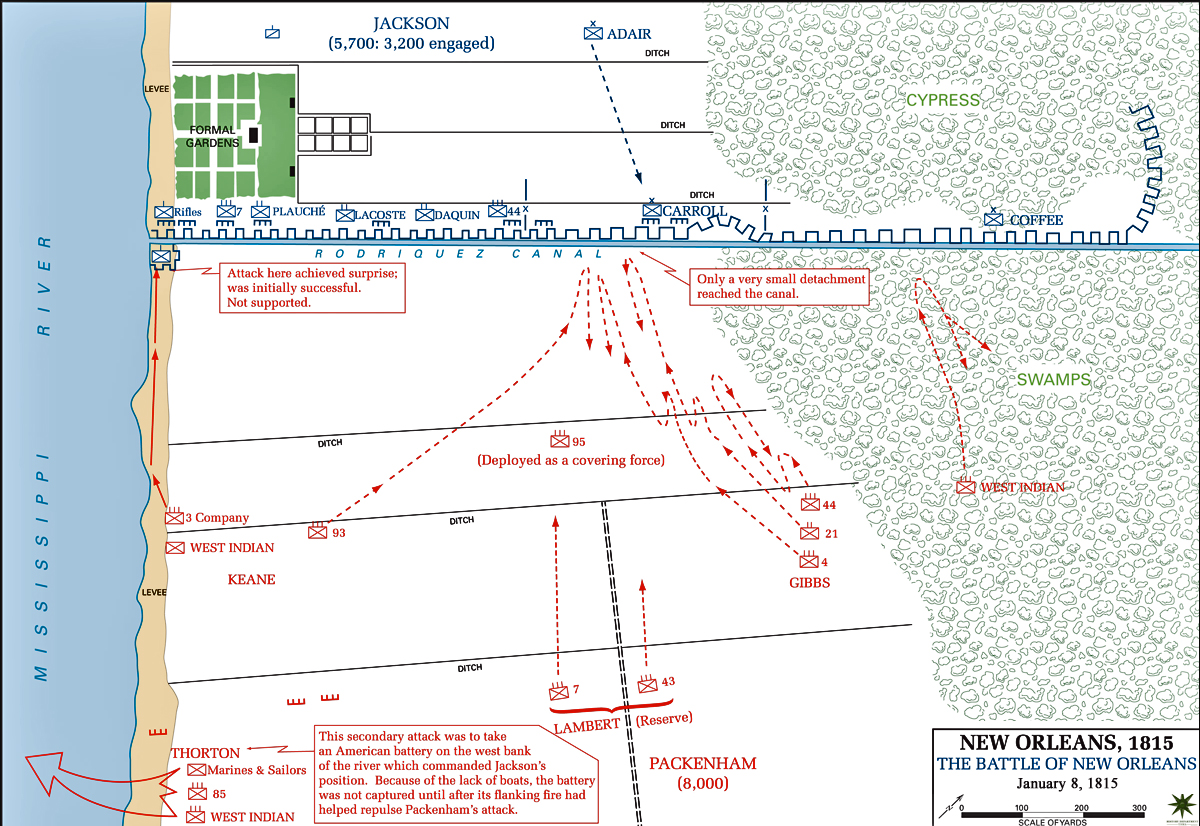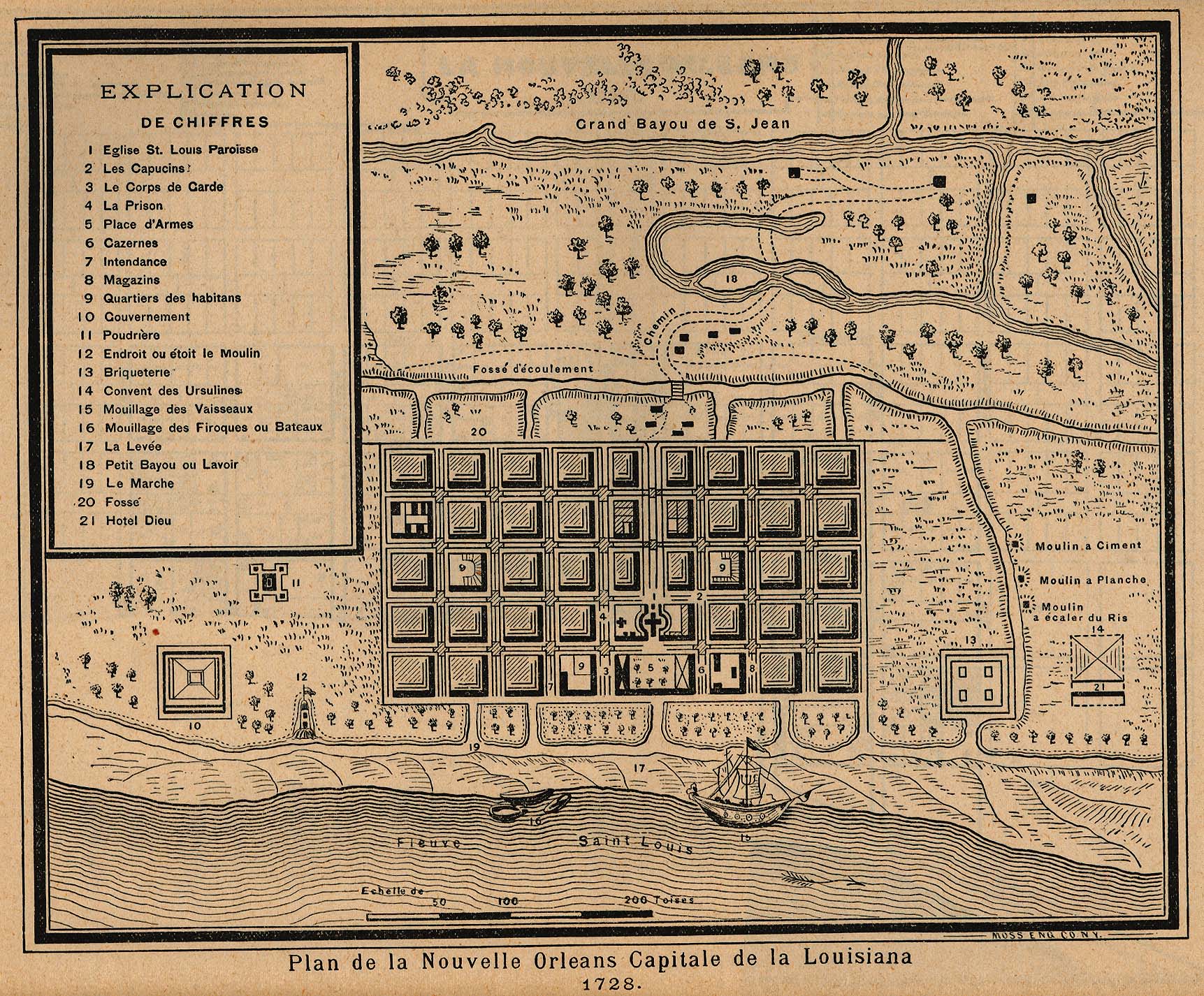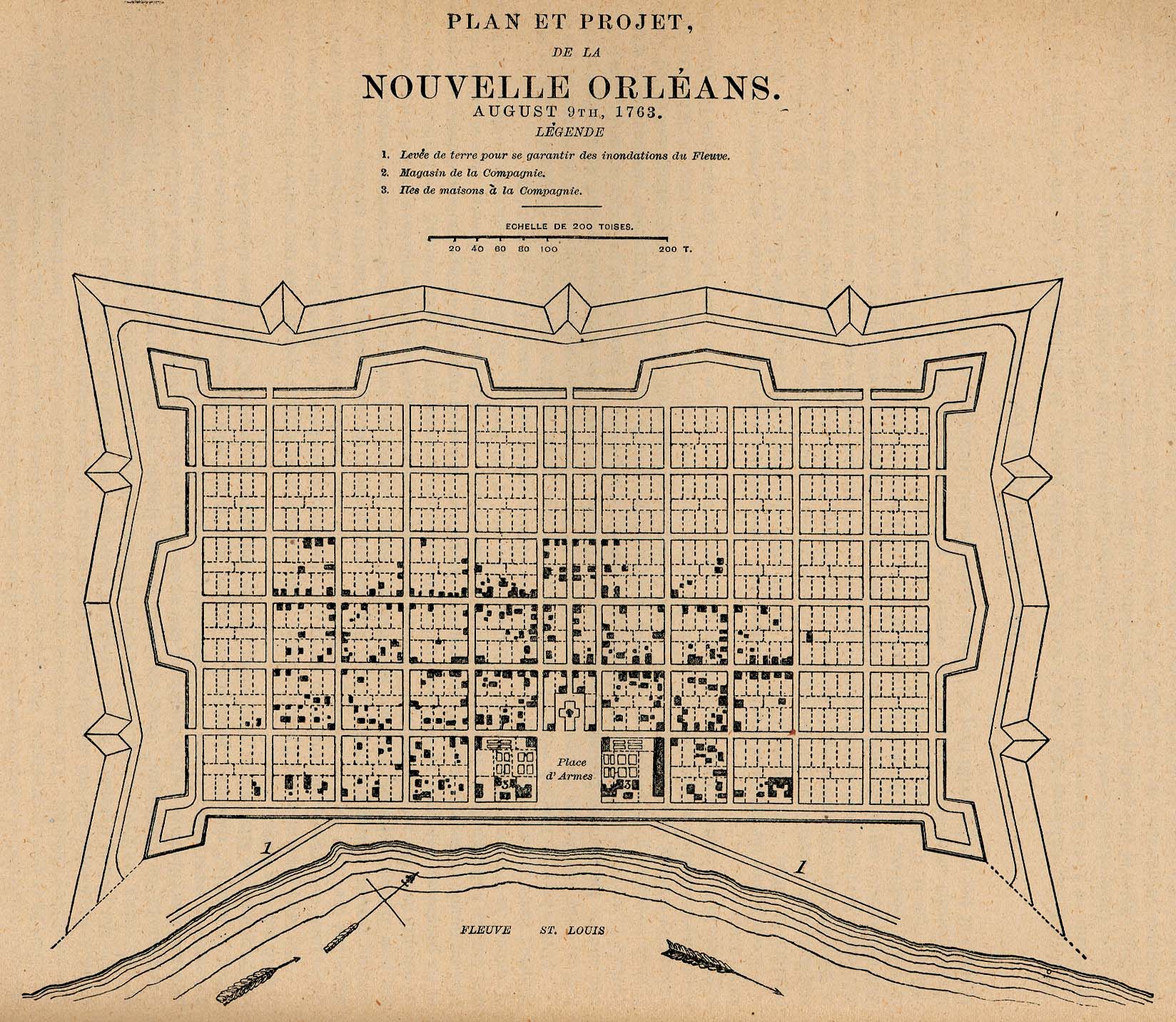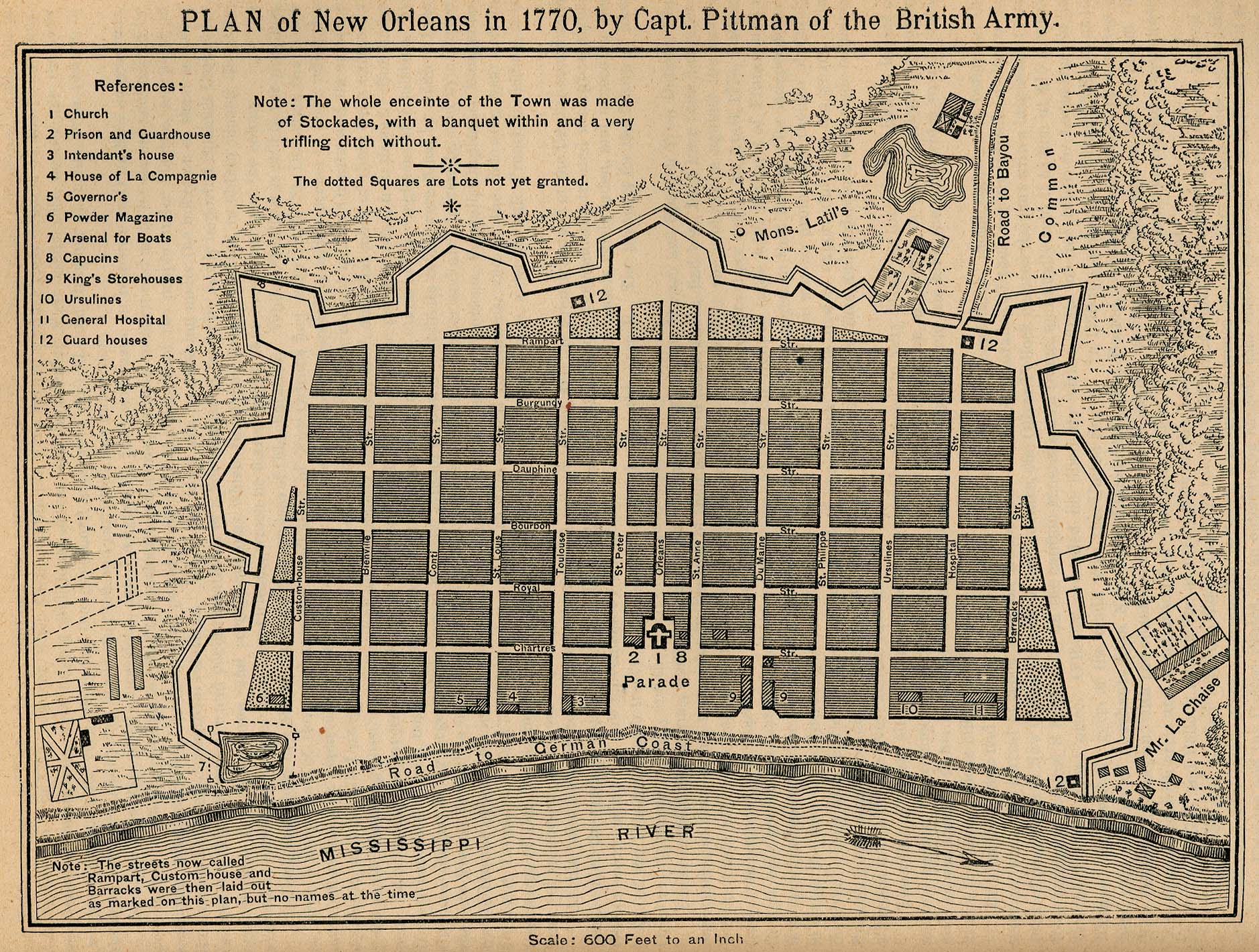Here's a great map of the battle from the USMA:
Welcome to the first-ever class at Loyola University dedicated to the history of New Orleans. We will use this blog as a forum for course material and general discussion. Students will also be able to post text and images to this blog from the field.
Tuesday, September 28, 2010
Monday, September 27, 2010
The New Orleans Public Library and research links
Here is a good link to start doing more investigation into your research from the New Orleans Public Library.
A lot has been written about New Orleans in popular and scholarly journals. Databases can be a great way to find things, but sometimes it pays to search the index of publications that are among the most likely to contain useful material. Here are a few you should consider examining more closely:
Louisiana History
The Louisiana Historical Quarterly (became Louisiana History in the 1980s) (both LH and LHQ are in JSTOR)
Cultural Vistas (published by the Louisiana Endowment for the Humanities)
The Historic New Orleans Quarterly
And, of course, you should search the catalog of the Historic New Orleans Collection (called MINT) for items related to your topic.
The Louisiana State Museum has a lot of useful databases to search, including maps and images. Go to their site and investigate under the "Search and Reference" tab.
A lot has been written about New Orleans in popular and scholarly journals. Databases can be a great way to find things, but sometimes it pays to search the index of publications that are among the most likely to contain useful material. Here are a few you should consider examining more closely:
Louisiana History
The Louisiana Historical Quarterly (became Louisiana History in the 1980s) (both LH and LHQ are in JSTOR)
Cultural Vistas (published by the Louisiana Endowment for the Humanities)
The Historic New Orleans Quarterly
And, of course, you should search the catalog of the Historic New Orleans Collection (called MINT) for items related to your topic.
The Louisiana State Museum has a lot of useful databases to search, including maps and images. Go to their site and investigate under the "Search and Reference" tab.
Friday, September 24, 2010
Old Spanish Custom House
You missed out on your opportunity to buy the Old Spanish Custom House on 1300 Moss St. Check the details here.
Thursday, September 23, 2010
Monday, September 20, 2010
Sunday, September 19, 2010
Photos from the Campanella bus tour
RC demonstrates his bus-surfing/presentation technique.
Listening and learning near the Rivergarden / Jackson Avenue area in the old Irish Channel
Decaying old wooden wharves along the river at Felicity Street.
Loyola Students (and a bunch of Tulane Students) eating Vietnamese food in NOE.
New flood protection structures at the outlet of the Industrial Canal
Thanks again to Richard Campanella of Tulane for letting us Loyola folks along for the ride. It was an enjoyable and very informative tour.
Friday, September 17, 2010
Interesting newspaper article
Here is an interesting article on NOLA.com today:
http://www.nola.com/politics/index.ssf/2010/09/sit-ins_at_canal_street_lunch.html
http://www.nola.com/politics/index.ssf/2010/09/sit-ins_at_canal_street_lunch.html
Thursday, September 16, 2010
Colonial Agriculture
Today we will briefly look at colonial agriculture in and around New Orleans.
Here is a link to Laura Plantation.
The Wax Myrtle (Bayberry)
I have had one more student sign up for Saturday, but still have room for 4 more!
We are also going to discuss your paper.
an LASTLY, your Petit Test 1 is going to be a take-home. Questions to be distributed in class on Thursday!
Here is a link to Laura Plantation.
The Wax Myrtle (Bayberry)
I have had one more student sign up for Saturday, but still have room for 4 more!
We are also going to discuss your paper.
an LASTLY, your Petit Test 1 is going to be a take-home. Questions to be distributed in class on Thursday!
Tuesday, September 14, 2010
Today's reading
Once again we are going to look at the French roots of New Orleans, particularly as the relate to broad social and cultural questions.
We should be able to answer (in conjunction with last Thursday's lecture) why New Orleans took such a "French character," particularly that of 18th Century France, and how that character in conjunction with its "situation" forged an enduring element of the city's reputation.
We should be able to answer (in conjunction with last Thursday's lecture) why New Orleans took such a "French character," particularly that of 18th Century France, and how that character in conjunction with its "situation" forged an enduring element of the city's reputation.
Field Trip with Richard Campanella (sign up)
These are the names I have thus far confirmed to take Saturday's bus tour with Richard Campanella:
1.) Cristina Soley
2.) Jan Melancon
3.) Pia Vocke
4.) Monique Verdin
5.) Caitlin Sullivan
6.) Christina Cambre
7.) Katie Gilmore
8.) Jay Gilmore
9.) Ellen Maloney
I have room for six (6) more, and will take the first six that email me.
1.) Cristina Soley
2.) Jan Melancon
3.) Pia Vocke
4.) Monique Verdin
5.) Caitlin Sullivan
6.) Christina Cambre
7.) Katie Gilmore
8.) Jay Gilmore
9.) Ellen Maloney
I have room for six (6) more, and will take the first six that email me.
Some updates to our calendar
All,
I have already made some slight changes to our calendar:
I will not be gone on 9/30 as thought, so we will have class on that day. This makes the schedule as follows:
R 9/16: BD 195-200: Discussion of your topics for "Sense of Place" Essay.
Saturday F/T with Richard Campanella
T 9/21: CNO: Chap 2
R 9/23: At Library with Malia Willey: TURN in take-home test 1 / Topic for essay
Saturday F/T with me at Spanish Fort/Pitot House
T 9/28: BD: 260-262. CNO: Part II Intro:
R 9/30: Deadline and discussion of internet research reports.
I have already made some slight changes to our calendar:
I will not be gone on 9/30 as thought, so we will have class on that day. This makes the schedule as follows:
R 9/16: BD 195-200: Discussion of your topics for "Sense of Place" Essay.
Saturday F/T with Richard Campanella
T 9/21: CNO: Chap 2
R 9/23: At Library with Malia Willey: TURN in take-home test 1 / Topic for essay
Saturday F/T with me at Spanish Fort/Pitot House
T 9/28: BD: 260-262. CNO: Part II Intro:
R 9/30: Deadline and discussion of internet research reports.
Wednesday, September 8, 2010
Some historical maps and themes for today
An early plat of "Nouvelle Orleans" from 1728
Spanish for fortification, 1763
British map from 1770
And more details on my map of important geographic points!
Today we're going to have some lecture materiel. Points considered will include:
1) How did the literary efforts of early settlers and visitors to New Orleans transmit what they observed to audiences in France, and how did these efforts shape the popular image of the city as a "New Babylon?"
2) Why was the planning of the French Quarter so important to John Law's company? Who was Pauger and what sort of problems did he confront?
3) After the collapse of John Law's company in 1731, New Orleans had to turn to new ways of making money. What was the basis for this economy and why was so much of this trade illicit?
Spanish for fortification, 1763
British map from 1770
And more details on my map of important geographic points!
Today we're going to have some lecture materiel. Points considered will include:
1) How did the literary efforts of early settlers and visitors to New Orleans transmit what they observed to audiences in France, and how did these efforts shape the popular image of the city as a "New Babylon?"
2) Why was the planning of the French Quarter so important to John Law's company? Who was Pauger and what sort of problems did he confront?
3) After the collapse of John Law's company in 1731, New Orleans had to turn to new ways of making money. What was the basis for this economy and why was so much of this trade illicit?
Field Trip 1 and 2
All,
I have gotten word that our first field trip will be on September 18, but will only have room for 15 and perhaps a few more of us. Be that as it may, I am going to allow students on a first-come, first served basis. It is a bus tour with Richard Campanella of Tulane University and it should be a good one. But it is also an all-day affair. Here are the instructions from Dr. Campanella:
The second field trip offered will be the one that I discussed: We'll meet at Old Spanish Fort at 10:30 on September 25. From their we will head to the Pitot House. I'll give out maps and more details as the time draws near.
I have gotten word that our first field trip will be on September 18, but will only have room for 15 and perhaps a few more of us. Be that as it may, I am going to allow students on a first-come, first served basis. It is a bus tour with Richard Campanella of Tulane University and it should be a good one. But it is also an all-day affair. Here are the instructions from Dr. Campanella:
We meet in front of Gibson Hall- Tulane at 9:45AM for a 10AM departure, and return by 4PM. They should bring $10-12 for lunch.
The second field trip offered will be the one that I discussed: We'll meet at Old Spanish Fort at 10:30 on September 25. From their we will head to the Pitot House. I'll give out maps and more details as the time draws near.
Tuesday, September 7, 2010
"Site" vs. "Situation"
Today we will grapple with the underlying question posed in Bienville's Dilemma - to wit, Bienville's dilemma!
Some visuals for class:
La Salle's 1682 voyage:
Here is a link to a handy Google Map outlining the basic factors of the 18th Century on Lake Pontchartrain.
Some questions to consider:
Why would New Orleans, though a poor "site" would be considered and important "situation" for a city of its kind? How did this remain true from Bienville's decision-making process through the colonial era?
Some visuals for class:
La Salle's 1682 voyage:
Here is a link to a handy Google Map outlining the basic factors of the 18th Century on Lake Pontchartrain.
Some questions to consider:
Why would New Orleans, though a poor "site" would be considered and important "situation" for a city of its kind? How did this remain true from Bienville's decision-making process through the colonial era?
Thursday, September 2, 2010
The River Giveth, The River Taketh Away
Today we will spend a little time talking about the relationship between the Mississippi River and the city of New Orleans. Specifically, we'll explore the ongoing struggle between man and nature to make the place inhabitable.
Some links:
The Times-Picayune put together this nice flash animation about the creation of the land upon which the city now rests.
Here is an interesting page about the Old River Control system that went into operation in 1963 that kept the Mississippi River from diverting increasingly to the Atchafalaya River.
Here is a short T-P video from when the Corps of Engineers opened the Bonnet Carre Spillway several years ago to relieve the pressure on the city's levee system.
And here is the latest FEMA map showing flood zones in New Orleans. Notice the patterns referenced in the text?
Some links:
The Times-Picayune put together this nice flash animation about the creation of the land upon which the city now rests.
Here is an interesting page about the Old River Control system that went into operation in 1963 that kept the Mississippi River from diverting increasingly to the Atchafalaya River.
Here is a short T-P video from when the Corps of Engineers opened the Bonnet Carre Spillway several years ago to relieve the pressure on the city's levee system.
And here is the latest FEMA map showing flood zones in New Orleans. Notice the patterns referenced in the text?
Subscribe to:
Posts (Atom)















